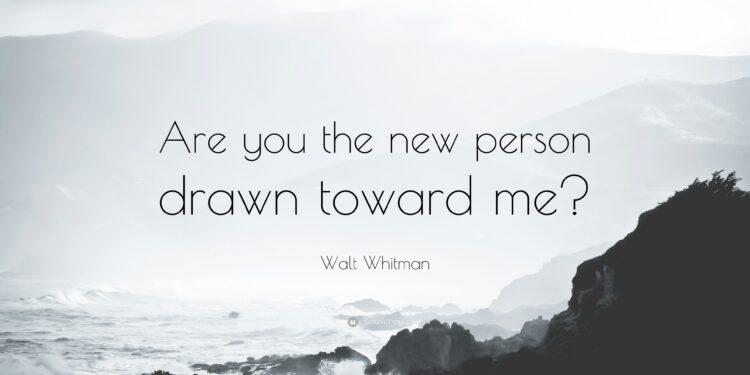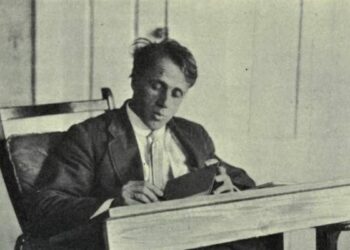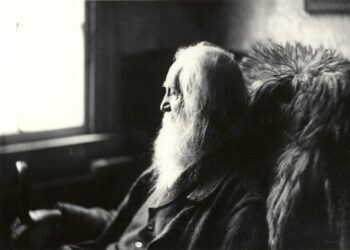Table of Contents
ToggleIntroduction
The New Person Drawn Toward Me? Summary By Walt Whitman Walt Whitman’s poem Are You the New Person Drawn Toward Me? is a reflective piece from his seminal collection Leaves of Grass. Known for his innovative free verse and themes of individuality, connection, and universal belonging, Whitman delves into the complexities of human relationships and the nature of attraction in this poem. Here, the poet contemplates the motivations and perceptions of a person who appears drawn to him, questioning whether the connection is based on genuine understanding or superficial fascination.
Whitman’s characteristic embrace of humanity is tempered in this work by a sense of skepticism. While he often celebrates the interconnectedness of all life, in this poem, he pauses to challenge the authenticity of human connections. Through a series of rhetorical questions and profound musings, Whitman explores themes of self-awareness, individuality, and the limitations of interpersonal understanding.
Summary of Are You the New Person Drawn Toward Me?
In Are You the New Person Drawn Toward Me?, Whitman addresses a newcomer who is attracted to him, perhaps intrigued by his aura, personality, or reputation. The poem begins with a direct question: “Are you the new person drawn toward me?” This immediate address sets a tone of curiosity, introspection, and mild skepticism. Whitman wonders if the attraction stems from an authentic understanding of who he is or if it is based on superficial impressions.
Whitman expresses a degree of doubt about whether the newcomer truly comprehends his depth, complexity, or individuality. He emphasizes that understanding another person is a profound and intricate process, one that goes beyond outward appearances or surface-level charm. The poet reflects on his own multidimensional nature, subtly suggesting that he is not easily understood or defined.
As the poem unfolds, Whitman highlights the gap between external perception and internal reality. He suggests that the newcomer might be drawn to an idealized version of him rather than his true self. This tension between how one is perceived and who one truly is forms the crux of the poem. Whitman ends on a note of quiet self-assurance, asserting that his identity cannot be fully grasped by others, reinforcing the idea of the unknowable self.

Themes in Are You the New Person Drawn Toward Me?
1. Individuality and Complexity
Whitman celebrates the complexity of the individual, emphasizing that no person can be fully understood or encapsulated by another. The poet views himself as a multifaceted being, beyond the grasp of casual observers. This theme aligns with Whitman’s broader exploration of individuality throughout Leaves of Grass.
By addressing the limitations of understanding, Whitman challenges the notion that people can be easily categorized or known. He underscores the depth and intricacy of human identity, suggesting that true understanding requires time, effort, and emotional depth.
Read more
2. Skepticism Toward Superficial Connections
The poem critiques superficiality in human relationships. Whitman questions whether the newcomer’s interest is based on genuine curiosity or shallow admiration. This skepticism serves as a broader commentary on the nature of attraction, warning against relationships that lack depth or authenticity.
Whitman’s questioning tone reveals his discomfort with being idealized or misunderstood, a sentiment that resonates with anyone who has felt reduced to a stereotype or an image rather than appreciated for their true self.
3. The Unknowable Self
A recurring theme in Whitman’s work is the concept of the self as an infinite, ever-evolving entity. In this poem, he suggests that no one can fully comprehend another person’s essence. The poet asserts his own identity as vast and complex, implying that attempts to define or “know” him are inherently limited.
This theme reflects Whitman’s philosophical belief in the boundless nature of human existence. It also aligns with his embrace of contradictions and multitudes, as famously expressed in Song of Myself: “Do I contradict myself? Very well then I contradict myself, (I am large, I contain multitudes.)”
4. Authenticity and Mutual Understanding
Whitman explores the idea that genuine relationships require mutual effort and understanding. He contrasts superficial attraction with deeper, more meaningful connections, suggesting that the latter are rare and valuable. The New Person Drawn Toward Me? Summary By Walt Whitman
This theme invites readers to reflect on their own relationships and the extent to which they seek to truly know and understand others. It also challenges the audience to consider how they present themselves to the world and whether they allow others to see their authentic selves. The New Person Drawn Toward Me? Summary By Walt Whitman
5. Perception vs. Reality
Whitman delves into the tension between how we are perceived and who we truly are. The poem suggests that people often project their own desires or expectations onto others, creating an image that may not align with reality.
This theme is especially relevant in a modern context, where social media and curated identities often blur the line between perception and authenticity. Whitman’s meditation on this topic reminds readers of the importance of looking beyond appearances to understand the true essence of a person.
Analysis of Literary Elements
1. Free Verse Structure
Whitman’s use of free verse allows the poem to flow naturally, mirroring the rhythm of thought and speech. The lack of rigid structure reflects the organic nature of human connection and individuality, reinforcing the poem’s themes. The New Person Drawn Toward Me? Summary By Walt Whitman
Read more
2. Direct Address
The poem’s direct address to the newcomer creates a sense of immediacy and intimacy. By speaking directly to the subject, Whitman draws readers into the interaction, making them feel as though they, too, are being questioned and examined.
3. Rhetorical Questions
Whitman employs rhetorical questions to provoke introspection and challenge the newcomer’s motives. These questions encourage readers to consider their own relationships and the depth of their understanding of others.
4. Tone
The tone of the poem is contemplative and slightly skeptical. While Whitman does not outright reject the newcomer’s interest, he approaches it with caution, reflecting his desire for authenticity and depth in relationships.
5. Universal Themes
Although the poem is deeply personal, its themes are universal. Whitman’s exploration of individuality, connection, and authenticity resonates across time and cultures, making the poem as relevant today as it was when it was written. The New Person Drawn Toward Me? Summary By Walt Whitman

Conclusion
Walt Whitman’s Are You the New Person Drawn Toward Me? is a profound meditation on individuality, connection, and the complexities of human relationships. Through its reflective tone, rhetorical questions, and exploration of universal themes, the poem invites readers to consider the authenticity of their own connections and the ways in which they perceive and are perceived by others. The New Person Drawn Toward Me? Summary By Walt Whitman
Whitman’s skepticism and introspection remind us of the importance of seeking depth and authenticity in our relationships, challenging us to move beyond superficial attraction and truly understand the people around us. As relevant today as it was when it was first written, the poem continues to inspire reflection on the nature of individuality and the human experience. The New Person Drawn Toward Me? Summary By Walt Whitman
Read more
1. What is the central question in the poem?
The central question is whether the newcomer’s interest in the poet is based on genuine understanding or superficial attraction. This question reflects Whitman’s broader exploration of authenticity and human connection.
2. How does the poem reflect Whitman’s philosophy?
The poem aligns with Whitman’s belief in the complexity and boundlessness of the self. It emphasizes individuality, the importance of authentic relationships, and the idea that people cannot be fully understood or defined by others.
3. Why does Whitman address the newcomer directly?
By addressing the newcomer directly, Whitman creates a sense of immediacy and intimacy. This technique also invites readers to reflect on their own motives and relationships.
4. What role does skepticism play in the poem?
Skepticism is a key element of the poem, as Whitman questions the authenticity of the newcomer’s interest. This skepticism underscores the poet’s desire for deeper, more meaningful connections.
5. How does the poem explore the concept of perception vs. reality?
Whitman highlights the gap between how we are perceived and who we truly are. He critiques the tendency to project ideals onto others, emphasizing the importance of seeing people for their true selves.
6. What is the tone of the poem?
The tone is contemplative and slightly skeptical, reflecting Whitman’s cautious approach to the newcomer’s interest. Despite his skepticism, the poem is not dismissive but invites introspection.
7. How does Are You the New Person Drawn Toward Me? relate to Leaves of Grass?
The poem is part of Whitman’s Leaves of Grass, a collection that celebrates individuality, connection, and the complexity of the human experience. It reflects many of the themes that permeate the collection, including the unknowable self and the importance of authenticity.
8. What is the significance of rhetorical questions in the poem?
Rhetorical questions are a key literary device in the poem, allowing Whitman to challenge the newcomer’s motives and encourage readers to reflect on their own understanding of others.

















